Solar energy fact check
Solar energy is a cost-effective, eco-friendly power alternative with advantages over traditional energy sources. Learn the facts about solar energy and use them to help reduce the spread of misinformation.
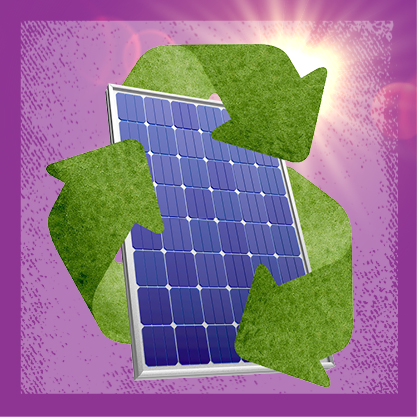
Solar panel recycling
Fact: Solar panels are largely recyclable, supporting eco-friendly disposal and sustainability
Up to 95% of the materials used in a solar panel can be recycled. The main materials in solar panels are commonly repurposed in large volumes. They include:
- plastic
- glass
- aluminium.
A Queensland partnership is aimed at improving recycling processes and guiding the country in managing end-of-life solar products responsibly.
This initiative will investigate the best ways to collect unwanted residential, commercial and large-scale solar panels, dispose of them responsibly and provide information on reprocessing and recovery costs.
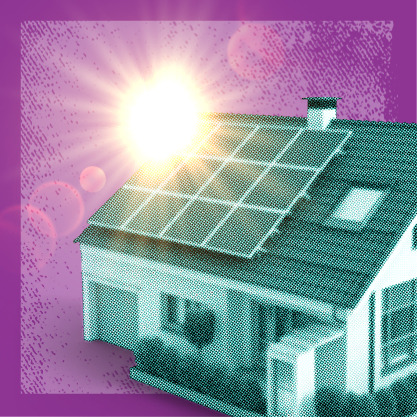
Reliability and performance of panels
Fact: Solar panels work best with direct sunlight, but they also capture diffused light on cloudy days
With 300 days of sunshine in Queensland each year, solar energy is a reliable way of meeting our energy needs.
On days when there is no direct sunlight, ultraviolet (UV) penetration through the clouds still allows electricity generation, but at a reduced rate of 10–25% of their full capacity.
Solar modules are flat, have a relatively smooth surface, and are covered with anti-reflective coatings made to absorb sunlight. They reflect as little as 2% of incoming sunlight—about the same as water and less than soil.
Aligning panels to face the sun and tracking the sun’s movement during the day can increase the electricity produced on sunny and cloudy days.
Minimising shade on the solar panels caused by nearby trees, buildings or other structures will also ensure maximum electricity production.
The angle of your roof plays an important role in energy output, with north-facing installations typically creating the most electricity.
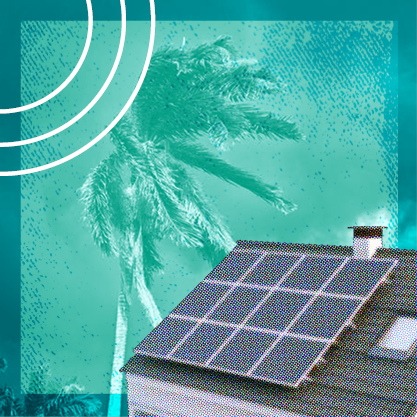
Extreme weather planning
Fact: Always prepare your solar system for dangerous weather conditions so it doesn’t become a safety risk
Solar panels are designed to withstand strong wind forces when correctly installed to meet building and safety codes.
Before an expected extreme weather event, shut down your solar power system properly to avoid potential hazards or damage to the system. It’s important to follow the installer procedures, which can be found with the inverter or on the main switchboard.
Most shut down procedures will ask you to turn off:
- the inverter AC mains isolator—usually found in the meter box
- the photovoltaic (PV) array isolator—usually found next to the inverter.
If a solar system gets flooded or is damaged by a storm, consider it a significant electrical risk:
- Do not interact with or try to turn off the system.
- Keep a safe distance from all parts of the system and avoid rooftops where panels and wiring may be present.
- Contact your electrician or installer for advice.
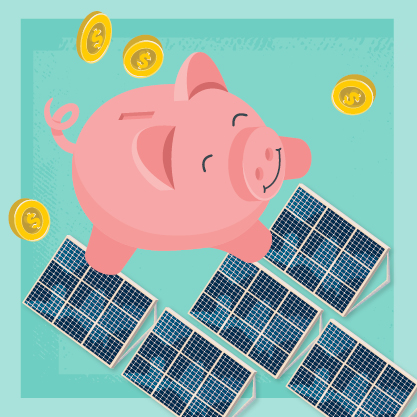
Cost-effectiveness
Fact: Solar power is an affordable energy type with great savings potential
Solar energy is a more cost-effective option than traditional energy sources—including storage and transmission costs (see International Energy Agency and CSIRO). Household savings can be substantial when we switch to solar, as outlined by Canstar Blue.
The cost of installing a solar photovoltaic (PV) system can be offset within 4–7 years by savings on traditional electricity bills. Use the solar calculator to estimate what savings are relevant to you.
Wholesale electricity prices on the east coast halved in 12 months to late 2023, thanks in part to the availability of low-cost renewable energy.
Solar power has become much cheaper to generate, with the price per megawatt hour (MWh) falling dramatically from $135 in 2015 to $45–$65, making it one of the most attractive generation methods in sunny Queensland.
Financial support including interest-free government loans, rebates and subsidies substantially increase the financial returns over the 25 to 30-year lifespan of rooftop solar installations. These initiatives reduce the initial cost of installing renewable energy systems for individuals and small businesses.
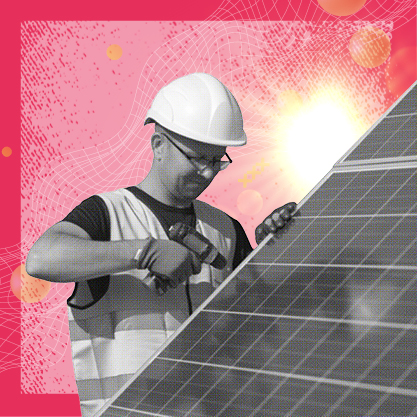
Panel maintenance
Fact: Maintaining solar panels is surprisingly easy and requires minimal effort
Since solar panels have no moving parts, they are one of the lowest maintenance energy solutions available. They require occasional cleaning and rare, easy-to-handle repairs.
It is generally advised to have solar panels professionally cleaned once a year to ensure they:
- operate efficiently
- remain in top condition.
High-quality solar panels are built to clean themselves when it rains.
A simple clean during periods of extended dry spells to remove dust, debris and bird droppings can help maintain their energy production levels.

Solar farms and land use
Fact: Large solar farms contribute to renewable energy generation while considering land use and agricultural practices
According to the Queensland Solar Farm Guidelines (PDF, 5,936KB), a solar farm typically requires 2–3 hectares of land per megawatt (MW) of power generated.
Although solar farms are usually established on land with lower ecological and farming value, solar farms across Australia are being trialled on agricultural land.
Ongoing sheep grazing trials suggest the co-existence of solar farms and livestock are compatible.
The land that supports solar arrays can:
- be revegetated with a range of low-lying, deep-rooted plants, grasses, and flowers, rebuilding the soil
- support local ecosystems (e.g. honeybees, butterflies, hummingbirds and pollinators that are facing population threat).
At the end of a solar farm’s life, land can be reverted to its original agricultural use. Land use will depend on pre-agreed terms and conditions.
The Queensland Renewable Energy Landholder Toolkit was developed to help landowners make informed decisions about their land.
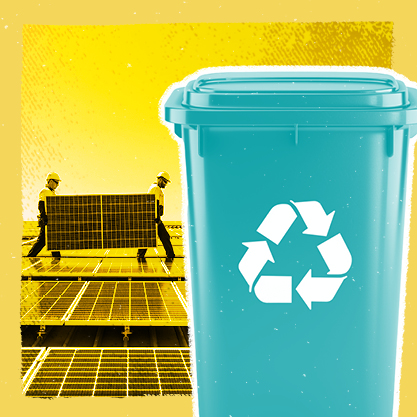
Decommissioning a solar farm
Fact: Solar farms are developed with strategic end-of-life choices to minimises environmental impact after removal
At the end of a solar project’s 20–30 years of generating energy, a decision is made to either:
- continue operating the solar farm using the existing infrastructure
- upgrade it with new technology
- start decommissioning.
Decommissioning a solar farm involves:
- removing the solar panels and infrastructure
- restoring the land to its original condition, in line with development conditions and agreed terms with the landowner
- recycling and repurposing materials, including the solar panels.
Any environmental effects caused by building and operating a solar farm are managed to minimise long-term impact on the land.
Read more
- Last updated
- 24 February 2025